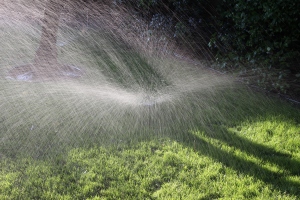The exposure meter measures the brightness of a scene. This is sometimes tricky as the brightness can vary a lot within the picture (eg. the sky can be much lighter than the foreground). So there are 4 different metering modes within the camera to try to help you obtain the best results. However, there isn’t necessarily a single choice for which one to use in a given scenario. It all depends upon personal choice.
Evaluative metering. This is the default option used in all automatic exposure modes (ie. not M, Tv, Av & P) & is the most sophisticated of the four. It breaks the picture down into zones, analyses them & tries to work out what type of picture you’re taking. It also biases the reading to the autofocus point.
Centre-weighted metering. This light metering mode measures light across the whole picture but strongly biases the reading to the centre. It doesn’t take the focus into account.
Partial metering. This measures the intensity of light in the middle of the frame (about 8-13% of the picture), ignoring everything else.
Spot metering. Measures light in a small circular area (about 2-4% of the frame) in the centre of the viewfinder.
Both spot & partial metering are useful when photographing a subject where the background is significantly darker or, lighter than the subject eg. a spot lit singer on stage. Spot metering is the hardest to use as it is the most precise & therefore, you need to know the spot to pick for the reading in order to get the best results.
Because of the way these metering systems work (measuring the light being reflected from a subject rather than the light falling on the subject) all will give the wrong results in certain situations. The reflected reading is skewed by colour for instance (light objects reflecting more light than dark ones) & so due to the averaging system used, assuming the average from the zones to be a midtone, exposure compensation is needed when photographing very light or very dark-toned subjects.




You must be logged in to post a comment.